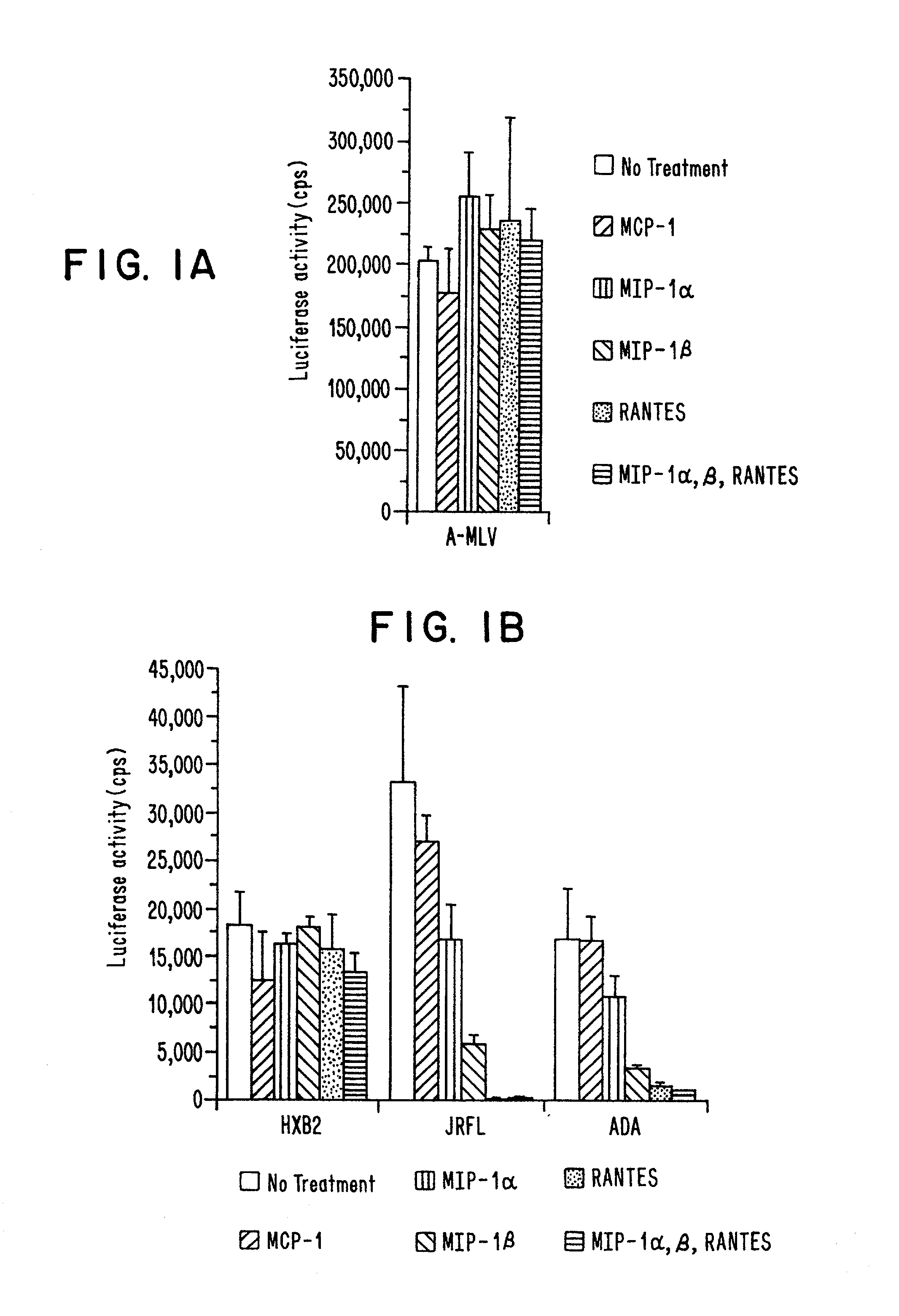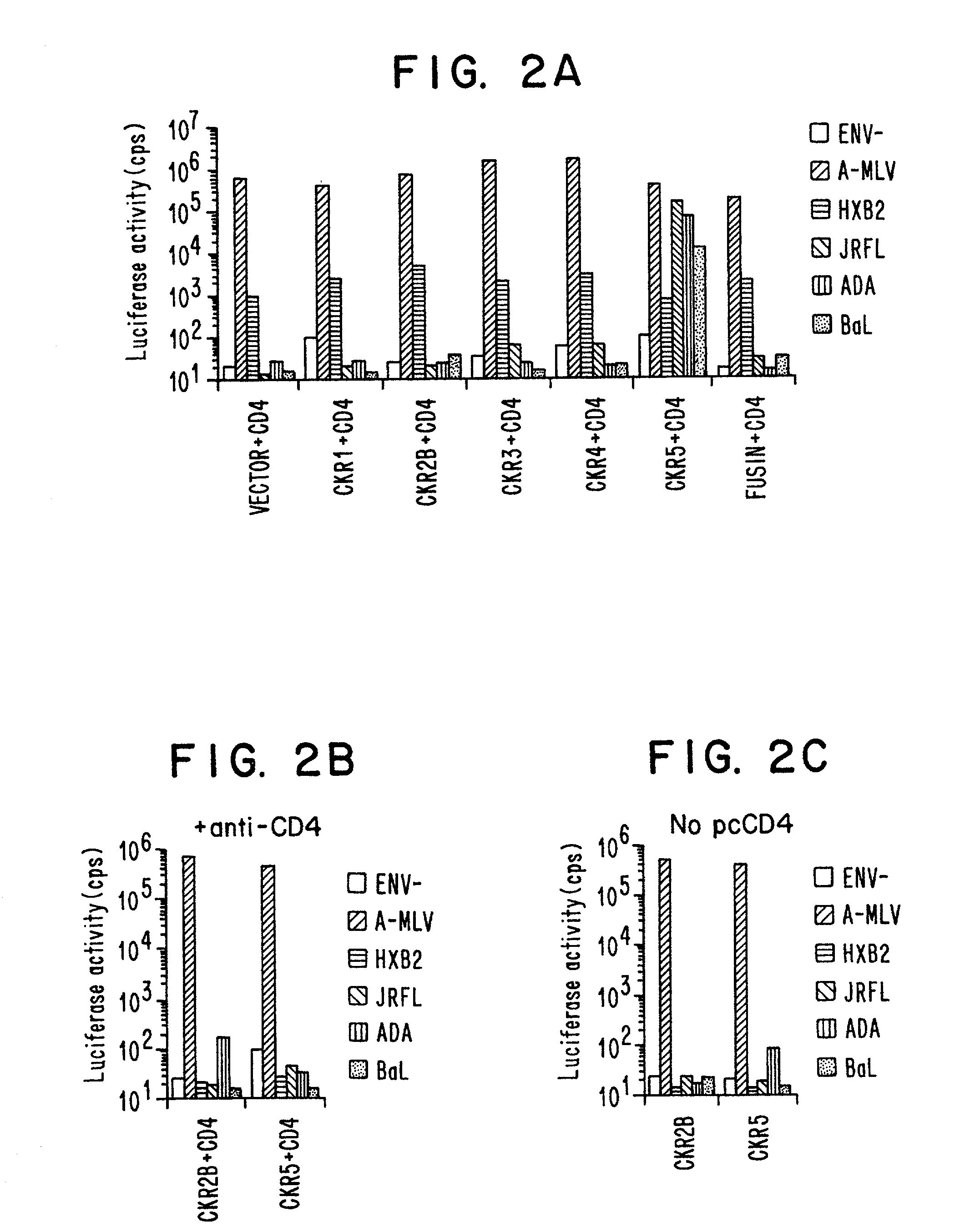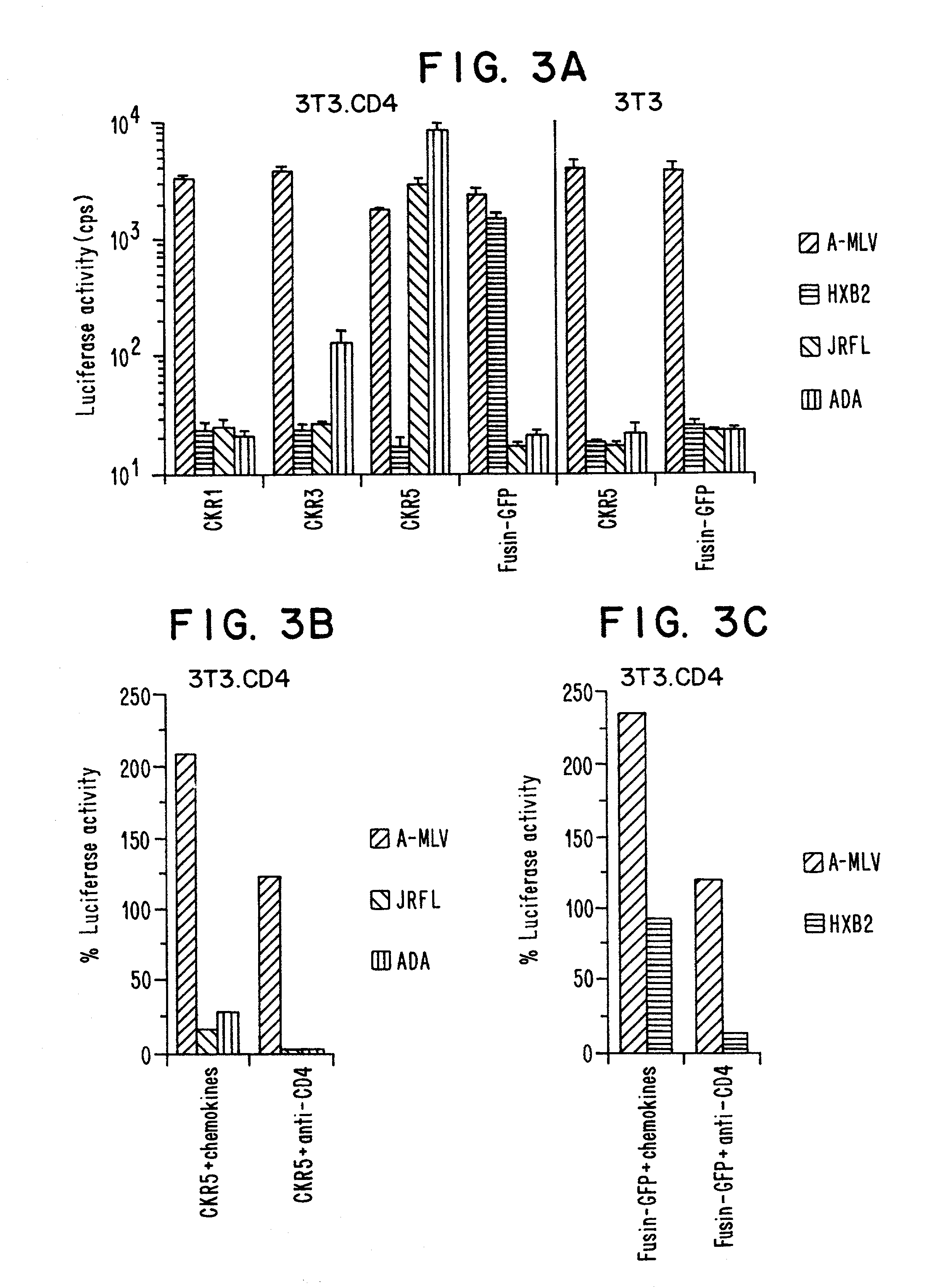Methods of identifying g-couple receptors associated with macrophage-trophic HIV, and diagnostic and therapeutic uses thereof
a technology of macrophage-trophic hiv and g-couple receptor, which is applied in the field of diagnostic and therapeutic use of g-couple receptors associated with macrophage-trophic hiv, can solve the problems of reducing signal transduction in various tissues, and achieve the effect of enhancing such activity
- Summary
- Abstract
- Description
- Claims
- Application Information
AI Technical Summary
Benefits of technology
Problems solved by technology
Method used
Image
Examples
example 1
CC-CKR-5 and CD4 Function Cooperatively to Mediate Entry of Macrophage-Tropic Virus
Methods
[0171]NL4-3-Luc-R−E− virus stocks pseudotyped by various Envs were generated by transfecting 293T cells with 10 μg each of pNL4-3-Luc-R−E− and pcDNAI-based expression vectors (InVitrogen) encoding JRFL, ADA, BaL, HXB2 or amphotropic MLV Env. Virus-containing supernatants were harvested 48 hours post-transfection and frozen in aliquots at −80°. Viruses were quantitated by ELISA assay for p24. Cells (5×104) were seeded in 48-well dishes in DMEM containing 10% fetal bovine serum and infected with luciferase reporter virus (50 ng p24) in a total volume of 400 μl with or without 30 minutes pretreatment with each of the chemokines listed (500 ng / ml, Peprotech). After 16 hours, 0.5 ml medium was added to the wells. After 4 days of additional culture, 100 μl lysates were prepared and luciferase activity in 20 μl was assayed using commercially available reagents (Promega) (see FIG. 1).
[0172]Cell lines s...
example 2
Replication of Macrophage-Tropic Virus in Cells Expressing CC-CKR-5
[0180]To test whether CC-CKR-5 expression allows for full replication and spread of macrophage-tropic virus, HOS.CD4 cells expressing CC-CKR-5 and control cells (HOS.CD4-BABE, transduced with the puromycin-resistance vector alone) are infected with the replication-competent reporter viruses HIV-HSA and HIV(BaL)-HSA. Both viruses are based on the T-cell line-adapted virus NL4-3, but the latter contains the BaL macrophage-tropic Env. Both viruses replicate in PM1 cells (FIG. 5A) but HIV(BaL)HSA fails to replicate in T-cell lines such as CEMX174 cells and in HOS.CD4. The viruses contain the gene for heat stable antigen (CD24) in place of nef, allowing for quantitation of the infected cells by fluorescence activated cell sorting (FACS) after staining with anti-HSA monoclonal antibody. The HOS.CD4-BABE cells remain uninfected with both viruses six days after infection FIG. 5B, but nearly all of the HOS.CD4-CKR5 cells are ...
example 3
CC-CKR-5 is Expressed in Primary T-cells and Macrophages
[0181]The initial description of the CC-CKR-5 gene suggested that its expression is limited to granulocyte precursors, and absent in peripheral blood mononuclear cells (PBMC). To be a major co-receptor in vivo, however, this molecule would be expected to be expressed in T-cells and monocytelmacrophages, the predominant cell-types targeted by the virus. Northern blot analysis with CC-CKR-5 cDNA as probe does not readily distinguish between CC-CKR-5 and the closely related CC-CKR-2 transcripts. Reverse-transcriptase PCR is performed on isolated subsets from PBMC. CC-CKR-5 transcripts are detected in both the monocyte / macrophage and macrophage-depleted CD4+ fractions (FIG. 6). In addition, it is found that PM1 and HUT78 cells both express the gene. Significantly more CC-CKR-5 transcript is detected in PM1 cells, consistent with the higher infectivity of these cells by macrophage-tropic and primary HIV-1 isolates.
[0182]CC-CKR-5 thu...
PUM
| Property | Measurement | Unit |
|---|---|---|
| volume | aaaaa | aaaaa |
| Tm | aaaaa | aaaaa |
| Tm | aaaaa | aaaaa |
Abstract
Description
Claims
Application Information
 Login to View More
Login to View More - R&D
- Intellectual Property
- Life Sciences
- Materials
- Tech Scout
- Unparalleled Data Quality
- Higher Quality Content
- 60% Fewer Hallucinations
Browse by: Latest US Patents, China's latest patents, Technical Efficacy Thesaurus, Application Domain, Technology Topic, Popular Technical Reports.
© 2025 PatSnap. All rights reserved.Legal|Privacy policy|Modern Slavery Act Transparency Statement|Sitemap|About US| Contact US: help@patsnap.com



